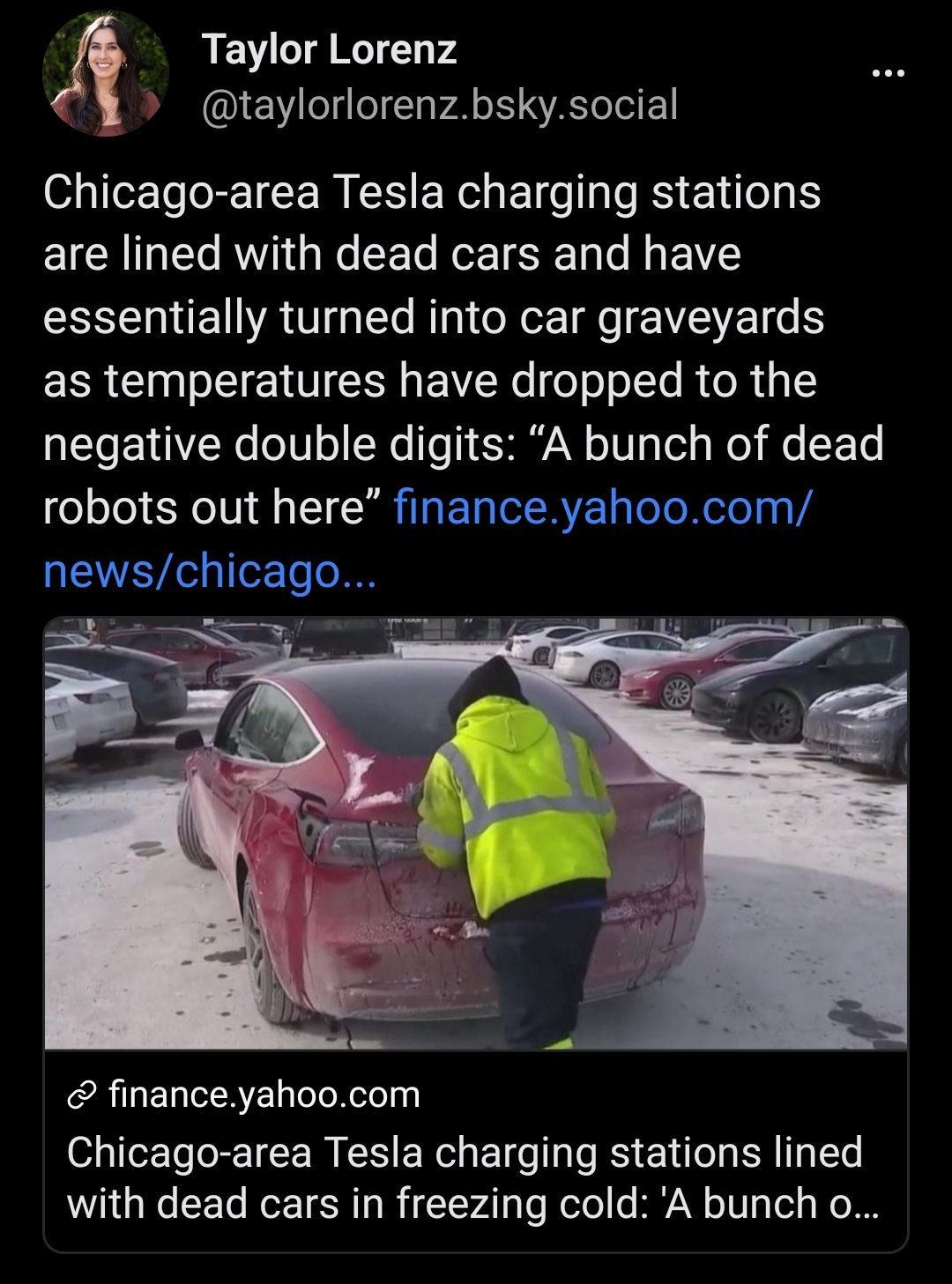Neither the article nor the post are worth anything: They don't tell any of the interresting parts. What are the temperatures? How long have the temperatures been like that? Why are all the cars at 0%? Why won't they charge?
Every halfway decent EV has an electric heater for the batteries. As long as there is juice in the batteries it will stop them from falling below a certain temperature to prevent permanent damages. Even if the heating drained all that was left, if you plug it in - the heating can start again. Why is this suddenly a problem in Chicago while many European countries regularly have -20°C and no dead Teslas or other EVs?
